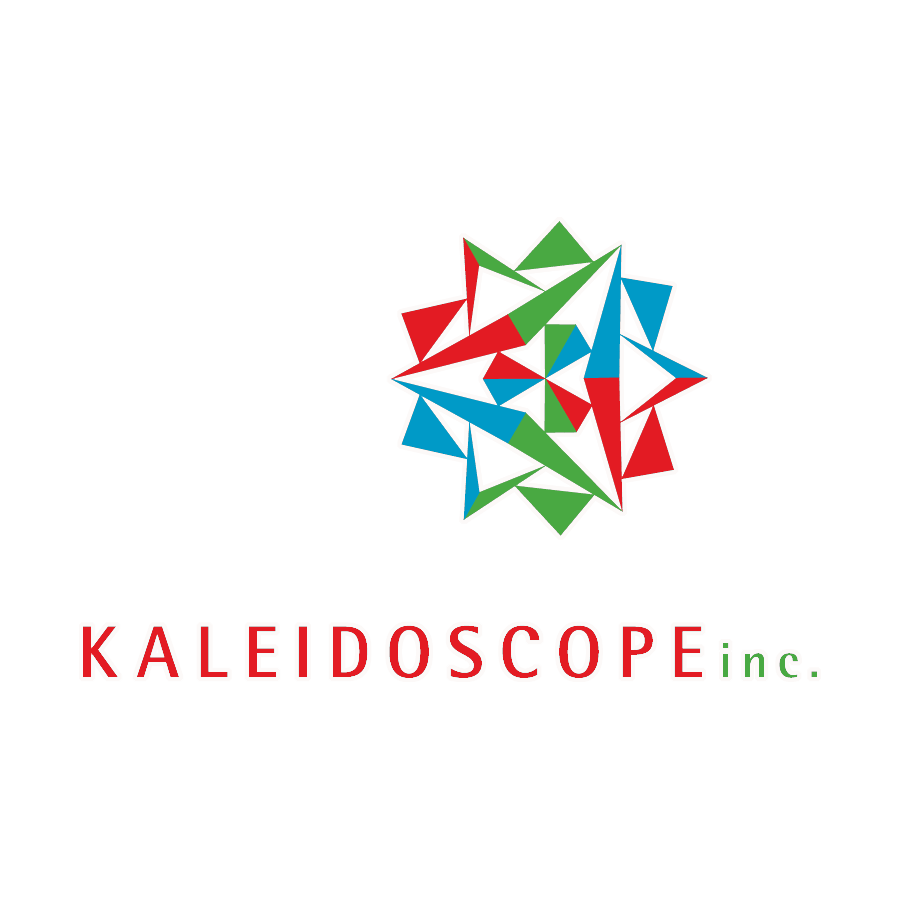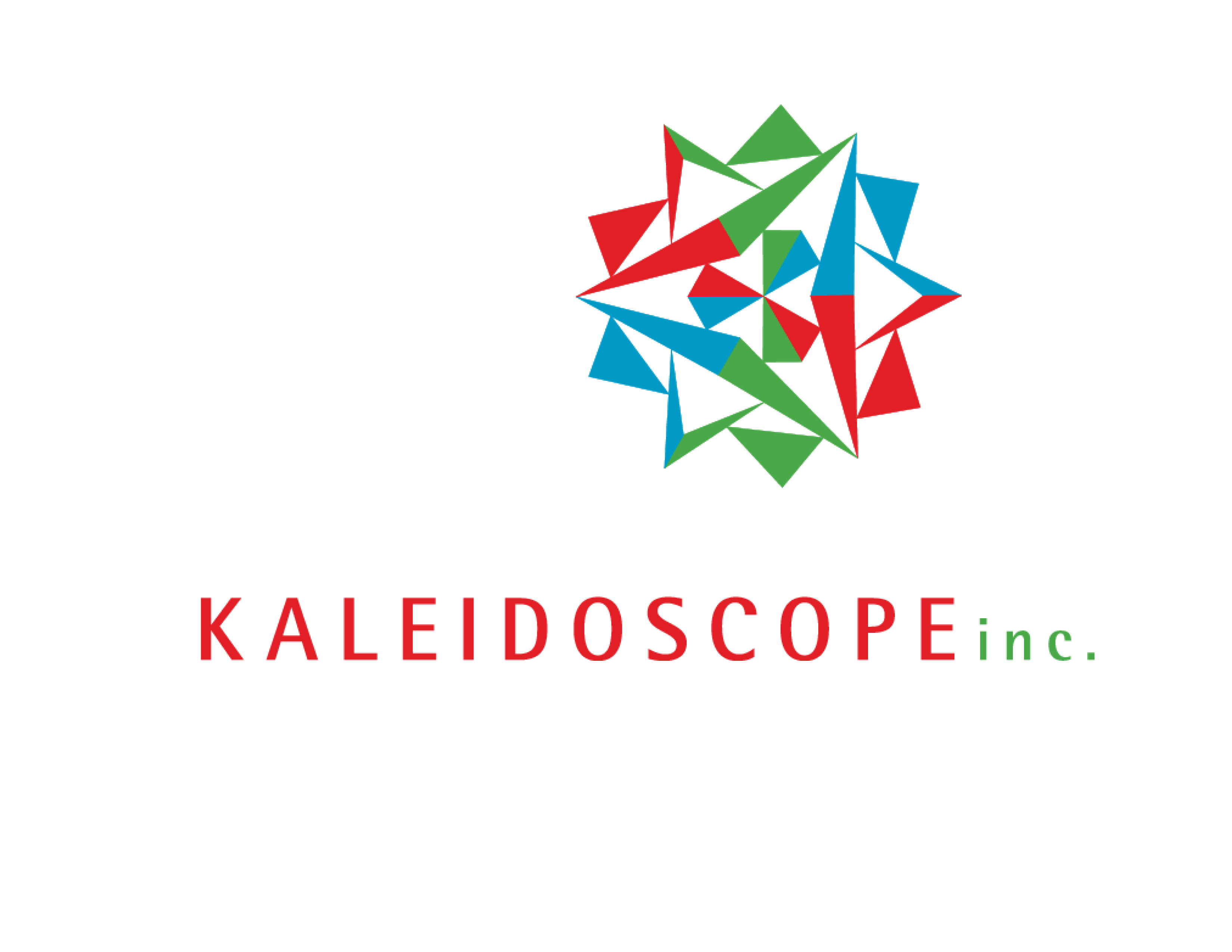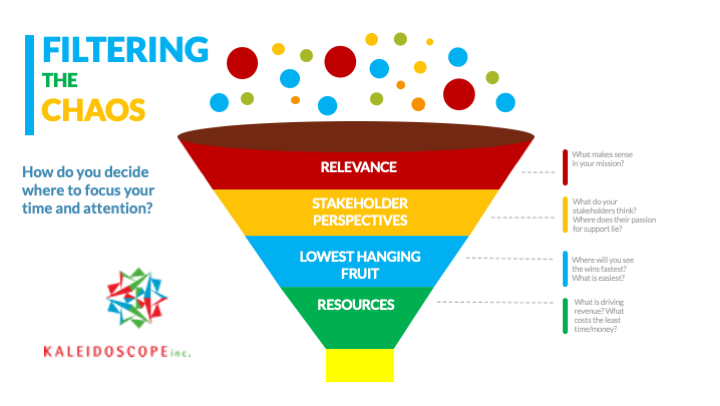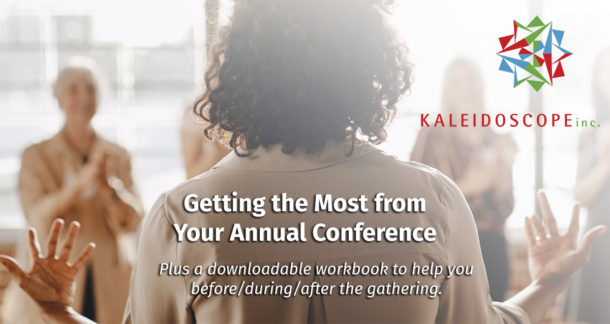Filtering the Chaos
Camp leaders are often known for their creative and abundant ideas. It is these ideas that continue to help the organization grow and prosper for many years. However, as more and more ideas flood in, so does the chaos of trying to figure out when, how, and what to focus on. The fun that was once had imagining these ideas in motion, is now filled with an overwhelming sense of confusion.
Where should you start?
What makes the most sense?
As consultants, we are often called in to help leaders filter through these ideas and prioritize them into actionable items. Our internal process includes sorting through relevance, revenue generation, timing, and so much more. We dig deep into the organization’s internal operations and structure to map out a plan that is customized for your organization. However, we understand that not all camps and retreat centers are currently in a position to hire a consultant to help. So, we have simplified our process below in hopes that your organization can use this method to filter through your chaos and figure out where your time and attention should be focused.
Starting at the top of the filtering funnel
At the very top of our sorting funnel is Relevance.
What ideas or areas of focus are relevant to your organization’s mission and goals?
This is the very first question that your organization should ask. If the idea has nothing to do with meeting the mission or goals of your organization, then it should not be considered, as it is not serving your current purpose. Throughout time, missions and values within an organization can shift, if you find that at some point the idea realigns with your camp or retreat center, you may want to reconsider. As for now, this would not be an effective use of your resources.
Next is Stakeholder Perspectives.
What will your stakeholders think of this idea and will they offer support?
Not only does your camp or retreat center have needs, but so do the owners and the communities you operate within. Matching up your ideas with the priorities of your supporters and the community, can help ensure you have the support you need to move forward with certain projects.
After that is Lowest Hanging Fruit.
What is the least challenging, and will produce results quickly?
Get it out of the way! If it is something that is relatively easy to obtain or implement, then it should be one of the first things you tackle. At this point, you already know it aligns with the mission of your organization and that your stakeholders will be on board, so if it is something you know will produce positive results without a considerable amount of time, it should be at the top of your list.
At the bottom of the sorting funnel is Resources.
What is driving your revenue and costs the least time and money?
Most importantly, if you do not have the resources to support your idea or project, then you may need to figure out how to change that before moving forward. You want to make sure you have the time, people, and money to see your ideas through. You also want to make sure that this idea/project will drive revenue to your business. After all, even if you are a non-profit organization, you must generate earnings to continue being successful and able to share your mission.
What chaos is left at the bottom?
Once you have filtered your ideas through the funnel, what are you left with? These are the ideas that are most relevant to your organization. These are the areas of focus that will benefit most from your time and attention.
What about all of the ideas that didn’t make it through the filtering funnel?
Sadly, it is probably not their time, but that doesn’t mean they won’t be valuable at another point. Resources and priorities change rapidly, and you may find another opportunity to implement your idea. The funnel is not a one-time-use filter, it can be used over and over again to reassess existing or new areas of need. We recommend keeping your ideas organized by category in a place that is easily accessible to your team.
Even though the timing may be off, you should always encourage your team to brainstorm new ideas and share them freely. Having a culture of open communication will create a more productive, creative, and enjoyable workplace environment.
We hope you find this system useful, and as always, feel free to contact us if you need additional help with strategic planning or sorting through your ideas!



